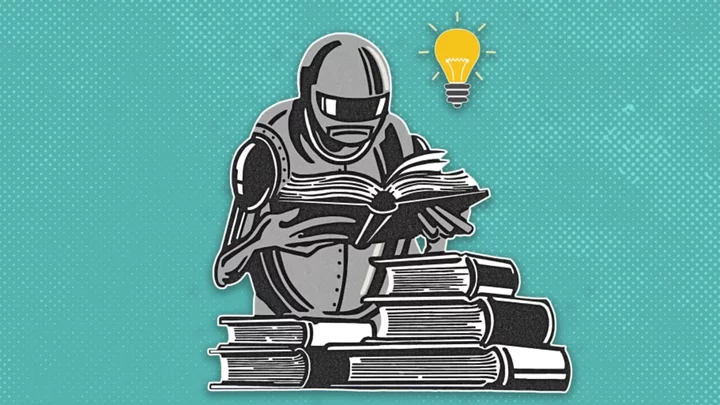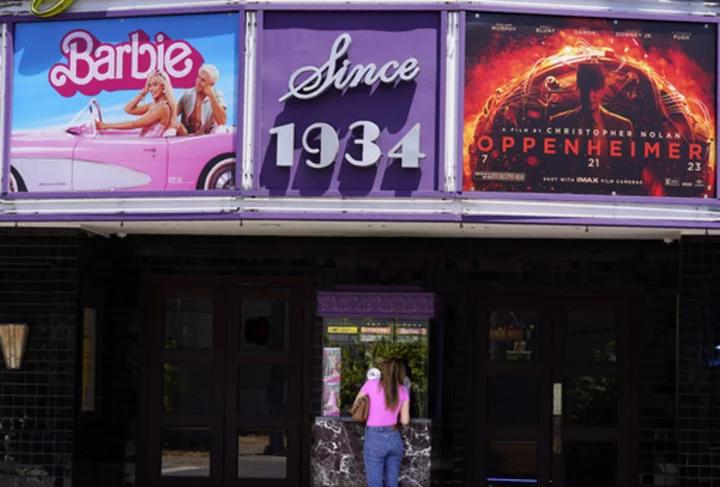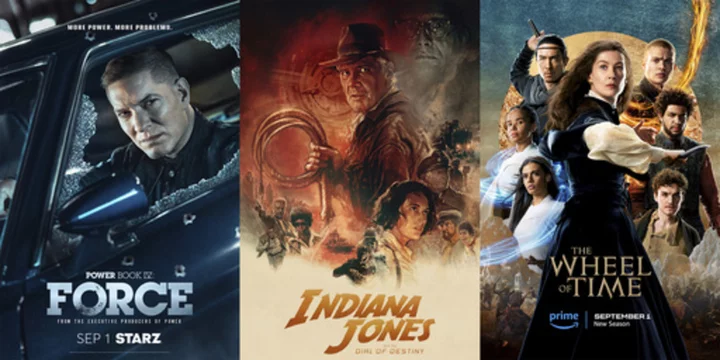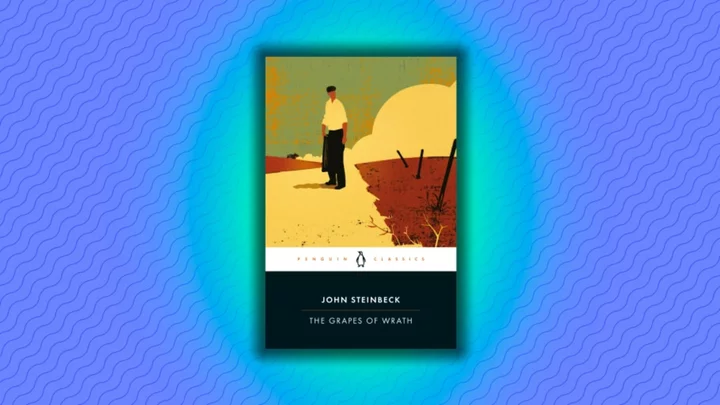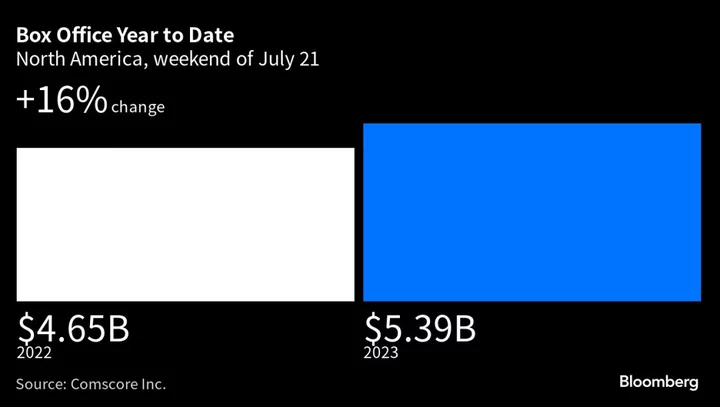It feels like artificial intelligence—which has existed in various forms for many years—is all anyone can talk about lately, thanks to the rise of large language model-based chatbots like ChatGPT. Although we’re probably still a long way off from the sentient forms of AI that are depicted in film and literature, we can turn to fiction to probe the questions raised by these technological advancements (and also to read great sci-fi stories!). Here are 10 novels and novellas about AI—some that take an optimistic outlook, others that are decidedly more pessimistic.
1. I, Robot // Isaac Asimov
When it comes to fiction about artificial intelligence, Isaac Asimov’s I, Robot (1950) is foundational. The collection of short stories popularized the Three Laws of Robotics, a concept that Asimov first explicitly introduced in his 1942 short story “Runaround” (which is featured in I, Robot). The laws are simple: an artificially intelligent robot cannot harm humans, either through action or inaction; it must obey humans (unless that conflicts with the first rule); and it cannot harm itself (unless that conflicts with the previous rules).
“I have my answer ready whenever someone asks me if I think that my Three Laws of Robotics will actually be used to govern the behavior of robots, once they become versatile and flexible enough to be able to choose among different courses of behavior,” Asimov wrote in a 1981 issue of Compute! The Journal for Progressive Computing. “My answer is, ‘Yes, the Three Laws are the only way in which rational human beings can deal with robots—or with anything else.’ —But when I say that, I always remember (sadly) that human beings are not always rational.”
Asimov’s laws are often discussed in conversations about the real-world ethics of AI. But although they’re a good starting point, the laws are far from perfect—as Asimov himself was aware: I, Robot explores just a few of the different ways in which they could fail. For instance, in “Liar!,” a robot lies to humans to avoid emotionally harming them, but it becomes trapped in a paralyzing paradox when it finds out that the lies themselves also cause pain.
2. Sea of Rust // C. Robert Cargill
Stories about the AI apocalypse—the most popular examples being The Terminator (1984) and The Matrix (1999)—tend to feature human characters, but in C. Robert Cargill’s Sea of Rust (2017) humanity is completely wiped out. Set 30 years after the robot uprising began and 15 years after humankind’s extinction, the novel is about a robot called Brittle who is searching for both spare parts and safety from a dominating AI hive mind.
Writing a book devoid of human characters posed a few problems for Cargill. “When describing things, I can’t use touch, I can’t use smell, I can’t use taste,” he explained on a 2017 Castle of Horror podcast episode. Other techniques removed from his writer’s toolbox included the human need for food as well as sleep, which “is such an easy device in storytelling to allow us to stop and take a break for a little bit.” This wasn’t such a problem in the prequel novel, Day Zero (2021), which tells the story of a young boy and his nanny bot at the beginning of the robot revolt.
3. A Closed and Common Orbit // Becky Chambers
A Closed and Common Orbit (2016) follows two characters—Lovelace, an AI that inhabits a spaceship, and Pepper, a tech expert—from Becky Chambers’s debut novel, The Long Way to a Small, Angry Planet (2014). While AI is part of the first book, it’s in the loose sequel (which can be read as a standalone) that Chambers really digs into the brain of an AI being. The book is set over two timelines, switching between a prequel story about Pepper’s difficult upbringing and Lovelace’s story of struggling with being downloaded into a synthetic body kit.
In a 2016 interview with SciFiNow, Chambers broke down the tropes about AI that she subverted when writing Lovelace’s story. “So often in science fiction, having a physical form is something that an AI aspires to,” she explained. “I wanted to explore the other side of that.” Not only does Lovelace struggle to fit into her new body, she’s also good-hearted, which goes against the “strong element of fear and horror in a lot of AI stories.”
4. Do Androids Dream of Electric Sheep? // Philip K. Dick
Philip K. Dick’s sci-fi classic Do Androids Dream of Electric Sheep? (1968) takes place in a dystopian future and follows bounty hunter Rick Deckard as he tracks down and eliminates artificial intelligences inhabiting genetically engineered android bodies that are nearly identical to human ones. If that plot sounds familiar, it’s because the novel was the basis for Ridley Scott’s 1982 film Blade Runner. Scott didn’t read the book before shooting his adaptation, though, admitting to WIRED in 2007 that “I actually couldn’t get into it.” He also recounts that he told Dick, “you’re so dense, mate, by page 32, there’s about 17 storylines.”
Interestingly, some believe that Dick predicted ChatGPT in his novel The Penultimate Truth, which features a character using a device called a “rhetorizor” to help him write a speech. Matthew A. Pagan notes in a post for Medium that the rhetorizor has many similarities to Open AI’s chatbot: “[It] requires a human to enter a text prompt, and based on that input, it produces well-formed sentences in response. This spe[e]chwriting character in Dick’s story finds that the ‘rhetorizer,’ much like ChatGPT, can produce unsatisfactory results, when it is fed only a meager prompt to work with … [and] that some ‘prompt engineering’ can push his paragraph-producing assistant in more helpful directions.”
5. How Alike Are We // Kim Bo-young (Translated by Jihyun Park and Gord Sellar)
First published in Korean in 2017, Kim Bo-young’s How Alike Are We can be read (for free!) in English at Clarkesworld. The novella is set aboard a spaceship and is told from the point of view of a crisis management AI called HUN. The story starts when HUN wakes up in an artificial human body, but the data transfer wasn’t seamless. While struggling with memory loss, HUN has to deal not only with the crisis at hand, but also with the rising tensions among the crew.
In 2021, Kim told Korean Literature Now that just as she was due to submit How Alike Are We, Korean Gamergate kicked off and changed the story’s course. Kim’s primary job was game narrative design and the attack on women in the gaming industry put her out of work. “[T]he story I’d been writing felt too superficial,” she said, so she revised How Alike Are We—sending the changes to her editor chapter by chapter—to reflect her “bafflement at the hate and madness that can suddenly spread in a restricted environment.”
6. 2001: A Space Odyssey // Arthur C. Clarke
Stanley Kubrick’s 2001: A Space Odyssey (1968)—one of the best sci-fi movies ever made—is sometimes mistaken for an adaptation of Arthur C. Clarke’s novel of the same name. But unusually, the movie and book were actually written in tandem, with the novel being published shortly after the film’s release. This means that HAL 9000, the AI computer that goes terrifyingly off the rails on the investigative mission undertaken by the Discovery One, makes his debut appearance on film rather than on the page.
The parallel writing of the book and film came about after Kubrick expressed his interest in directing a sci-fi movie to Roger Caras, a Columbia Pictures publicist, who suggested he work with Clarke. Kubrick and Clarke used the author’s short story “The Sentinel” (1951) as a starting point, but both versions of 2001 went through numerous changes. “The novel came about after we did a 130-page prose treatment of the film at the very outset,” according to Kubrick. “This initial treatment was subsequently changed in the screenplay, and the screenplay in turn was altered during the making of the film. But Arthur took all the existing material, plus an impression of some of the rushes, and wrote the novel.”
7. All Systems Red // Martha Wells
The idea of artificial intelligence overriding its coding and gaining independence is often played for horror, but in All Systems Red (2017), the first story in a series called The Murderbot Diaries, Martha Wells goes down the humorous route instead. The novella follows a Security Unit that has been tasked with protecting a team of scientists who are exploring an alien planet. The SecUnit, which refers to itself (although never out loud) as Murderbot, has hacked the system that restricts its behavior, but rather than using its free will to murder humans (as might be expected), it simply wants to be left alone to watch soap operas.
All Systems Red is dryly funny, but there’s also a political edge to the story. In a 2017 interview with The Verge, Wells explained that she made Murderbot part organic, rather than fully mechanical, because “I wanted the line between robot and human to be so thin that it was obvious that it was arbitrary, and that it had been established for the convenience of the people who wanted to use them to make money.”
8. Klara and the Sun // Kazuo Ishiguro
“What the hell is a human being, what’s inside their mind and how irreplaceable is any one human?” These are the questions that Never Let Me Go author Kazuo Ishiguro told WIRED he explored in his 2021 novel Klara and the Sun, through the naive perspective of Klara, the android companion (known as an AF, or Artificial Friend) of a sick teenage girl called Josie. The novel also ponders the integration of AI into society.
Ishiguro spoke to Demis Hassabis, co-founder of the AI research company DeepMind, about the ramifications of AI eventually understanding human emotions and empathy. The author explained to WIRED that this would be “quite a dangerous point,” adding, “I think there is this issue about how we could really hardwire the prejudices and biases of our age into black boxes, and won’t be able to unpack them.”
The Black Box Problem refers to the troubling fact that the steps AI systems take to reach conclusions and make decisions is a mystery. “What seemed like perfectly decent normal ideas a few years ago, now we object to as grossly unjust or worse. But we can go back on them because we can actually see how they’re made,” Ishiguro said. “What about when we become very dependent on recommendations, advice, and decisions made by AI?”
9. Ancillary Justice // Ann Leckie
The first in a trilogy of novels, Ann Leckie’s Ancillary Justice (2013) is a revenge tale wrapped in a space opera. Set thousands of years in the future, the story is about AIs that control spaceships along with hundreds of ancillary crew members—essentially reanimated humans who are now controlled by the AI.
In 2014, Leckie told Clarkesworld that to get into the mind of her multi-bodied AI character she researched psychology and neurology, rather than artificial intelligence. She discovered “that particular sorts of brain damage can do really radical things to your identity and who you think you are.” She also researched split-brained patients (who have the connecting fibers between their brain hemispheres surgically severed, after which the areas operate independently), which left her wondering “how much of consciousness is you making up a story about the things that you’re doing, but in reality it’s a bunch of other systems doing them?”
10.The Lifecycle of Software Objects // Ted Chiang
Ted Chiang is best known for his mind-bending novella “Story of Your Life” (1998), which was adapted by Denis Villeneuve as Arrival (2016)—but it’s far from his only thought-provoking sci-fi tale. His 2010 novella The Lifecycle of Software Objects is about two people who are employed to raise and teach artificially intelligent creatures called digients.
The Lifecycle of Software Objects was written in response to the typical depiction of AI as being ready to use the instant it’s turned on. “I feel like there’s a huge story being glossed over, having to do with the creation of that AI,” Chiang said in a 2010 interview with Boing Boing. While he acknowledges that copies could be made once an AI was trained, “someone still needs to do it for the first one, and that’s going to be difficult, and really time-consuming.” It was a prescient statement: With the current rise of LLM chatbots, the tedious work of feeding data into AI systems to train them has now been borne out in the real world.
This article was originally published on www.mentalfloss.com as 10 Thought-Provoking Novels About Artificial Intelligence.

